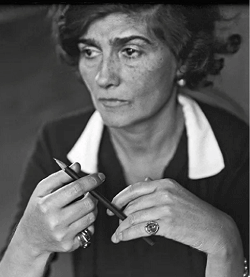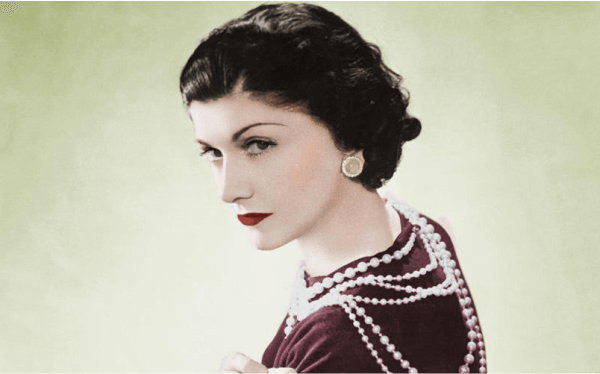Coco Chanel
Gabrielle Bonheur Chanel, a Famous French fashion designer, better known as the stage name Coco Chanel, was born in Saumur, France, on August 19, 1883, and she died in Paris on January 10, 1971. She dominated Parisian designer clothing for nearly six decades. She encouraged women in the fashion world to eschew the difficult, unpleasant clothing-such as petticoats & corsets-that predominated in 19th-century wear. The Chanel suit, the patchwork purse, costume jewellery, and the "little black dress" are just a few of her iconic inventions. Earlier Years of Coco ChanelThe majority of sources indicate that Gabrielle Chanel was born in 1883, but this information was kept secret because Coco was reluctant to share it. Her mother was alone and raised at a time of hardship and unpredictability. When she was 12 years old, her mother passed away, and Gabrielle was among the three girls her father sent to a Correze convent. She certainly learned to sew and gained a basic understanding of making clothes while living in a religious institution, despite the harsh rules and limited resources. She came to Moulins just at the age of 18, after leaving the convent. She found work as a seamstress as well as pursued a side gig singing at cabaret shows, but her stage voice wasn't strong enough to support a career. Chanel started an affair with wealthy aristocrat Étienne Balsan in 1908. This gave Chanel the chance to meet a variety of wealthy nobles and enter a new social Circle. Coco Chanel's CareerWith financial support from a boyfriend named Arthur Capel, Chanel established a store selling chic clothing in Deauville in 1913. She creatively incorporated jersey fabric, a manufactured material that served a purpose during First World War shortages. Her initial success encouraged her to build a second store in Biarritz, which grew throughout the First World War as a popular vacation spot for the wealthy. She swiftly established a reputable name for being on the cutting edge of fashion. In the most fashionable part of Paris, on 31 rue Cambon, Chanel was able to open her store by 1919. Fashion was revolutionised by Chanel's designs, which emphasised comfort & simplicity while adhering to her statement that "elegance must be pleasurable. Otherwise, it isn't luxury." There are claims that by the late 1920s, Chanel Industries, which included her couture house as well as a perfume laboratory, a textile mill, as well as a jewellery factory, were worth millions of dollars and employed over 2,000 people. The foundation of this empire's finances was Chanel No. 5, which she launched in 1921 with the assistance of one of France's most gifted perfume makers, Ernst Beaux. According to legend, the perfume's name comes from a sequence of fragrances that Beaux produced for Chanel to sample; she selected the fifth, a blend of jasmine and many other flower aromas, which was more complex & enigmatic than the single-fragrance perfumes available at the time. The scent's success was further aided by the fact that Chanel became the first well-known fashion designer to create a perfume and that she did so in a simple, modern bottle rather than the traditional one seen in most perfumes. She teamed up with businesspeople Pierre Wertheimer of the Bourjois cosmetics brand and Théophile Bader of Galeries Lafayette, both of whom promised to assist her in increasing the production and marketing of her scent in exchange for a portion of the revenues. Following the signing of a contract in which she agreed to collect only 10% of the royalties, Chanel filed several lawsuits over the next decades to reclaim ownership of her well-known scent. Chanel was never able to change the contract's conditions to enhance her royalties, but she still made a sizeable profit from the perfume. When World War II started in 1939, Chanel stopped her couture house. Her relationships with a German official tarnished her reputation during the Nazi occupation, and she did not make a comeback to fashion until 1954. In that year, she debuted the suit style that has since been widely imitated: a cardigan jacket with braid trim worn over a flowing skirt. She also popularised bell-bottomed pants as well as other novelties, all the while maintaining a tidy, timeless appearance. Major WorksThe majority of major celebrities and regular people alike like wearing Chanel's classic perfume, "Chanel 5," which has become a household name in the perfume industry. Chanel's contribution to the vocabulary of fashion is frequently credited as the iconic idea of the little black dress. This became Chanel's signature style. In addition to being a need for women, the classic Chanel bag, sometimes known as "2.55" because of the date of the bag's birth (February 1955), made bags more of a fashion statement and a high-end item. The well-known "Chanel suit," which was made especially for ladies, inspired them to pursue their careers in style. 
Recognition & AchievementsOn-TimeTime magazine's list of the 100 most important people of the 20th century, Chanel is the lone fashion designer. A Ten-year Break from the Fashion IndustryDespite the phenomenal success of her apparel line, Coco was compelled to close all of her stores in 1939, including the House of Fashion, because of World War II. Coco left Paris, unlike many other designers who departed the nation. Coco Chanel was jailed in September 1944 at the Committee Morals' recommendation. The cause was Gabrielle "Coco" Chanel's romance with German SS-Brigadeführer Walther Friedrich Schellenberg. She was released a short time after she was detained. Coco Chanel soon after made a move to Switzerland, where she has been residing for almost ten years. Designers began to emerge in post-World War II France like mushrooms after rain. One of them, a teenage fashion designer by the name of Christian Dior, said that Coco Chanel revolutionised fashion with a black turtleneck and ten rows of pearls. Come Back to the Fashion IndustryChristian Dior made ladies look like flowers after the war. He tightened their waists, filled various folds on the thighs, and dressed them in a crinoline. Coco Chanel made fun of this "hyper-femininity," saying, "Look how ridiculous these individuals are, wearing an outfit by a man who is unfamiliar with women, never had one, and also dreams of being one." When Coco Chanel arrived from Switzerland, Paris was packed with a wave of fashion designers who thought "Chanel" was a perfume brand. She stayed in a modest two-room flat at her preferred Ritz hotel in Paris. Coco resumed her involvement in the fashion sector. When Marlene Dietrich questioned Coco Chanel about her need for it, the fashion designer responded that she dreaded the dullness. Once Coco Chanel said: "Fashion fades, only style remains the same."Until she was very elderly, Coco Chanel kept up an outstanding show. Even while she slept, she had fresh fashion ideas. This amazing brand's roots hold the key to its success. The House of Chanel has always sold the art of life in addition to women's apparel. Legacy and DeathChanel continued to work till her death. By the start of the 1970s, she was sick and in deteriorating condition, yet she still managed to run her business. She started working on her company's spring catalogue in January 1971. On January 9, she had a lengthy drive before retiring early due to feeling under the weather. She passed away in the Hotel Ritz in Paris, where she had lived for more than 30 years, on January 10, 1971. When she passed away, Chanel was reportedly valued at $15 billion. Despite the ups and downs of her career, her legacy in the fashion business is unquestionable. In addition to fragrances and the tiny black dress, Chanel contributed to the acceptance of costume jewellery, pants, tweed jackets, as well as short hair for women, all of which were previously seen as fashion no-nos. Along with these classic pieces, the brand also produced a variety of quilted handbags, two-tone ballet heels, and black bouclé jackets. In 1983, fashion designer Karl Lagerfeld assumed control of Chanel and restored its renown. He served as the company's creative director up until his passing on February 19, 2019, and oversaw Chanel. Lagerfeld picked Virginie Viard as his successor after serving as his right-hand lady for more than three decades. The Wertheimer family owns Chanel, a privately held corporation still thriving and posted sales of about $10 billion for the 2017 financial year. Following her passing in 1971, a succession of designers oversaw Chanel's couture house, with Karl Lagerfeld's reign (1983-2019) being the longest & also most significant. The 1970 Broadway musical Coco set to star Katharine Hepburn and Chanel's keen understanding of female fashion needs, as well as her enterprising ambition and the romantic aspects of her life-her rise from poverty to riches & her sensational love affairs-have all served as inspiration for several biographical books, films, and plays.
Next TopicLangston Hughes
|
 For Videos Join Our Youtube Channel: Join Now
For Videos Join Our Youtube Channel: Join Now
Feedback
- Send your Feedback to [email protected]
Help Others, Please Share









